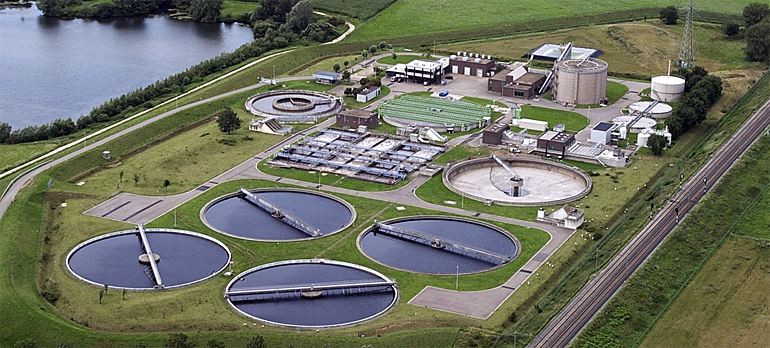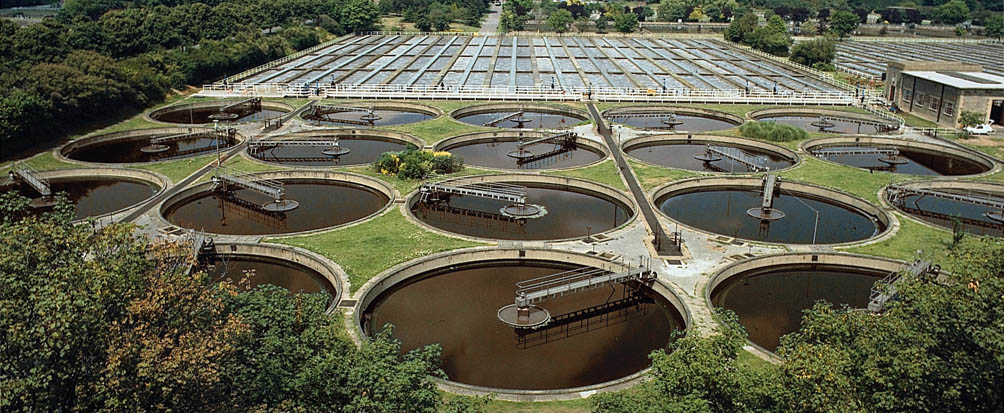The Relation Between Wastewater Management and Public Well-being
The Relation Between Wastewater Management and Public Well-being
Blog Article
Understanding Wastewater Treatment Processes and Their Ecological Impact
The ins and outs of wastewater treatment processes play an essential role in mitigating environmental difficulties linked with water pollution. Each phase, from initial to advanced treatments, is created to address particular contaminants, eventually safeguarding both public health and wellness and water ecosystems. Despite technical improvements in therapy effectiveness, considerable obstacles linger, consisting of the management of residual pollutants and the implications of nutrient runoff. As we explore the complexities of these processes, it becomes crucial to wonder about how much existing approaches can progress to meet the growing demands of sustainability and environmental preservation.
Review of Wastewater Therapy
Exactly how is wastewater transformed right into a risk-free resource for the environment? Wastewater therapy is a crucial procedure made to eliminate contaminants from made use of water, consequently securing public health and wellness and safeguarding environments. This process starts with the collection of wastewater from property, industrial, and business sources, which is after that directed to therapy facilities.
At these facilities, numerous physical, chemical, and biological techniques are employed to deal with the wastewater. Initial testing eliminates huge debris, adhered to by sedimentation to separate larger solids. Consequently, organic treatments, such as turned on sludge processes, utilize bacteria to damage down raw material. These methods not just minimize pollutant levels yet additionally help with the recovery of beneficial nutrients.
The treated effluent can be safely discharged into all-natural water bodies or recycled for watering and industrial objectives, advertising resource preservation. Additionally, the treatment procedure produces biosolids, which can be repurposed as plant foods or dirt amendments, additionally boosting sustainability.
Stages of Treatment Procedures
The wastewater therapy process commonly includes three main phases: initial, primary, and secondary treatment. Each phase offers a distinct role in lowering the pollutant load and making sure the effluent meets environmental requirements prior to discharge.

The key treatment stage concentrates on the physical splitting up of put on hold solids from the wastewater. Via sedimentation, larger fragments resolve at the base of sedimentation containers, creating sludge, while lighter products, such as oils and greases, float to the surface and are skimmed off. This procedure significantly decreases the organic and inorganic lots in the wastewater.
Second therapy is a biological process intended at more reducing the focus of raw material. Various methods, consisting of turned on sludge systems and dripping filters, use microorganisms to metabolize organic toxins. This phase is important for achieving the essential biochemical oxygen need (BOD) decrease, eventually causing cleaner effluent ready for discharge or more therapy. Each phase is vital in protecting ecological and public health and wellness.

Advanced Treatment Technologies
Adhering to the additional therapy processes, progressed treatment technologies play a crucial role in more enhancing the high quality of treated wastewater. These innovations are made to eliminate recurring pollutants that are pop over to this site not effectively gotten rid of throughout primary and additional therapies, guaranteeing the effluent fulfills stringent regulative standards.
Amongst the widely used innovative treatment techniques are membrane layer purification, reverse osmosis, and progressed oxidation processes. Membrane purification, consisting of microfiltration and ultrafiltration, works in separating fine fragments, virus, and colloids from the water (Wastewater). Reverse osmosis utilizes semi-permeable membranes to eliminate liquified solids, causing premium water suitable for numerous applications
Advanced oxidation procedures (AOPs) employ strong oxidants to deteriorate organic contaminants, consisting of drugs and individual treatment products that are resistant to traditional therapy. These techniques boost the biodegradability of intricate substances, promoting their elimination.
An additional significant innovation is the usage of organic nutrient removal processes, which particularly target nitrogen and phosphorus, stopping eutrophication in obtaining water bodies. On the whole, innovative therapy technologies are crucial for achieving greater degrees of filtration, promoting water reuse, and protecting public health and wellness while dealing with the challenges related to wastewater management.
Ecological Advantages of Therapy
Many ecological benefits occur from effective wastewater therapy procedures that add to ecosystem health and sustainability. Primarily, these processes considerably minimize the launch of damaging contaminants into natural water bodies, which aids maintain marine environments. By removing contaminants such as hefty metals, nutrients, and pathogens, dealt with wastewater alleviates the risk of waterborne conditions and advertises biodiversity in aquatic environments.
Moreover, wastewater therapy facilities usually utilize advanced modern technologies that allow water recycling and reuse. This practice not just conserves fresh water resources yet likewise lowers the demand on all-natural water materials. Boosted nutrient removal from wastewater can additionally prevent eutrophication, a procedure that leads to algal blooms and succeeding oxygen exhaustion in marine systems.
Additionally, effective therapy procedures go to this website can reduce greenhouse gas emissions, especially methane and laughing gas, which are usually released throughout neglected wastewater disintegration. By capturing and using biogas from anaerobic digesters, facilities can convert waste right into renewable energy, therefore adding to a reduction in nonrenewable fuel source dependency.
Difficulties and Future Fads
While the environmental advantages of wastewater therapy are clear, several difficulties linger that hinder optimal results in this area. One significant issue is maturing framework, which typically brings about inefficiencies and enhanced functional expenses - Wastewater. Numerous therapy plants were made years ago, and their capacities do not align with contemporary demands, which consist of more stringent governing criteria and greater quantities of wastewater as a result of urbanization

Looking ahead, there is an expanding focus on resource recuperation and circular economy concepts within wastewater navigate to this site treatment. Innovations such as anaerobic food digestion, which can create biogas, and advanced purification innovations are gaining grip. These techniques not just improve therapy effectiveness but additionally advertise sustainability.
Eventually, dealing with these obstacles needs collaboration amongst stakeholders, financial investment in innovation, and a dedication to continuous study. By accepting these fads, the wastewater therapy sector can progress to meet the demands of a transforming environment and culture.
Conclusion
In verdict, wastewater treatment processes play a vital role in improving environmental high quality and public health and wellness. The multi-stage therapy structure, combined with sophisticated modern technologies, properly minimizes pollution and advertises lasting water monitoring.
Report this page